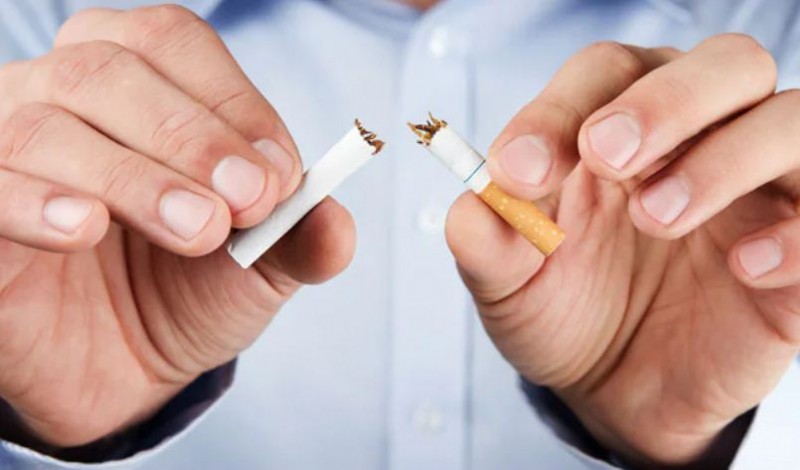
Anti tobacco day is observed around the world every year on May 31. Urgent Call to Action for Tobacco Consumers, Your Health and Future Hang in the Balance, Yes tobacco use is a significant global health concern that affects millions of people and causes numerous health problems. Whether you smoke cigarettes, use smokeless tobacco, or are exposed to secondhand smoke, the impact on your health can be severe. This article aims to shed light on the detrimental effects of tobacco and provide practical steps to help you break free from this harmful habit.
Tobacco contains numerous toxic substances, including nicotine, carbon monoxide, and tar. These substances have various adverse effects on your body, leading to both short-term and long-term health consequences. Here are some of the most common health risks associated with tobacco use:
a) Respiratory Issues: Smoking damages your respiratory system, causing chronic coughing, wheezing, and shortness of breath. It increases the risk of developing respiratory conditions such as chronic bronchitis, emphysema, and lung cancer.
b) Cardiovascular Diseases: Tobacco use is a leading cause of heart disease, stroke, and peripheral vascular disease. The chemicals in tobacco harm the blood vessels, leading to the build-up of plaque and increasing the risk of blood clots.
c) Cancer: Tobacco use is strongly linked to several types of cancer, including lung, mouth, throat, esophageal, pancreatic, and bladder cancer. Even smokeless tobacco products can increase the risk of oral and pancreatic cancer.
d) Reproductive Issues: Smoking during pregnancy poses serious risks to both the mother and the unborn child. It increases the likelihood of premature birth, low birth weight, stillbirth, and developmental issues in the baby.
e) Oral Health Problems: Tobacco use contributes to oral health problems such as gum disease, tooth loss, tooth discoloration, and oral cancer.
How to Quit Tobacco: Breaking free from tobacco addiction can be challenging, but with the right support and strategies, it is possible to quit. Here are some effective methods to help you on your journey:
a) Set a Quit Date: Choose a specific date to quit smoking or using tobacco products. Having a clear target can increase your motivation and determination to quit.
b) Seek Support: Inform your friends, family, and coworkers about your decision to quit. Their support and encouragement can be invaluable. Additionally, consider joining a support group or seeking professional counseling.
c) Nicotine Replacement Therapy (NRT): NRT products like nicotine patches, gum, lozenges, and inhalers can help alleviate withdrawal symptoms by providing controlled doses of nicotine while avoiding other harmful substances present in tobacco.
d) Medications: Consult a healthcare professional about prescription medications that can aid in smoking cessation. These medications can help reduce cravings and withdrawal symptoms.
e) Behavioral Therapies: Consider cognitive-behavioral therapy (CBT) or other behavioral therapies to address the psychological aspects of tobacco addiction. These therapies can help you develop coping mechanisms, manage triggers, and change your smoking-related behaviors.
f) Lifestyle Changes: Adopt a healthy lifestyle by engaging in regular exercise, eating a balanced diet, and managing stress effectively. These changes can reduce cravings and improve your overall well-being.
The Benefits of Quitting: Quitting tobacco has numerous immediate and long-term health benefits:
a) Improved Respiratory Health: Within weeks of quitting, your lung function begins to improve, and coughing and shortness of breath reduce.
b) Cardiovascular Benefits: Quitting lowers your risk of heart disease and stroke. Within a year, your risk becomes half that of a smoker.
c) Reduced Cancer Risk: Over time, your risk of developing various cancers decreases, and your body starts to repair the damage caused by tobacco.
Quitting tobacco use can have positive effects on fertility for both men and women. Tobacco, including cigarettes, contains numerous harmful chemicals and toxins that can negatively impact reproductive health.
For women, smoking can disrupt the normal functioning of the reproductive system. It can affect hormone levels, damage eggs, and lead to irregular menstrual cycles. Smoking also increases the risk of miscarriage, ectopic pregnancy (a pregnancy that occurs outside the uterus), and premature birth. By quitting tobacco, women can improve their chances of conceiving and having a healthy pregnancy.
In men, smoking can impair sperm production, motility (movement), and morphology (shape). It can also cause DNA damage to sperm cells. These effects can reduce fertility and increase the risk of infertility. By quitting tobacco, men can enhance their sperm quality and increase the likelihood of successful conception.
It's important to note that the harmful effects of tobacco on fertility can persist even after quitting, as the body needs time to recover. However, quitting smoking or using other tobacco products is a crucial step toward improving fertility and overall reproductive health for both men and women.